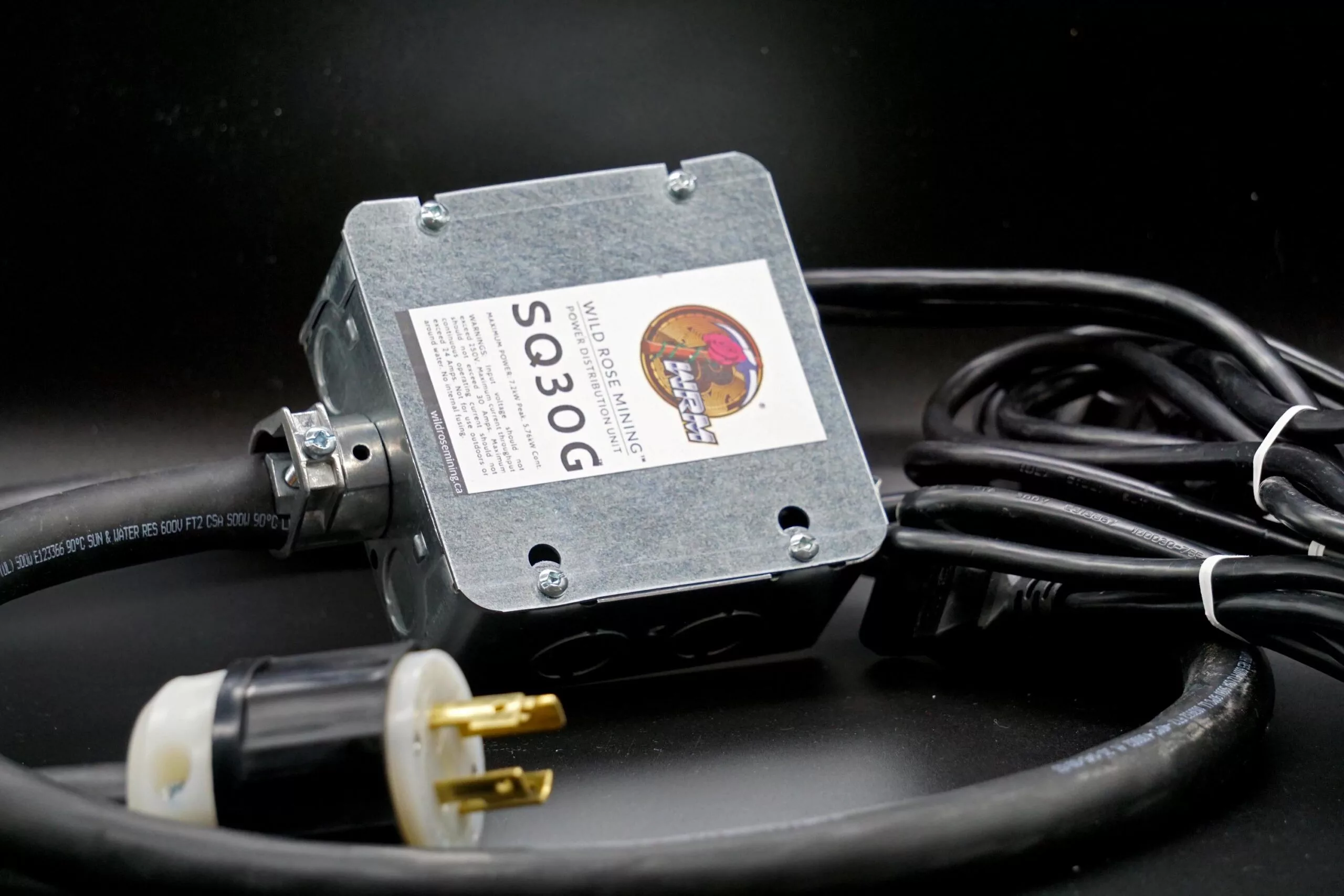We tend to receive the most questions from our customers about power distribution units which do not feature internal fusing for each output. This guide is written in hope of answering those questions before they are sent to our contact form. However, if you do have any questions after reading this guide, feel free to reach out.
Does Each Miner Have Access to the Entire Breaker Capacity?
The simple answer: No.
The more complex answer: Due to the complexity, and engineering work put into ASIC machines such as Antminers, the power supplies have built-in protections.
The first and most important of which, is an internal fuse. This fuse is connected directly to the live leads of the C14 inlet plug, meaning that once the fuse has blown, there is no physical electrical connection between the miner and the wire. This fuse is wrapped in heat shrink, and is placed in close proximity to the C14 inlet inside the power supply. We have disassembled a Bitmain APW9++ Power supply from an Antminer S17+ in order to showcase these fuses.
Top View
Fuses circled in red.

Fuse 1

Fuse 2

This guide does not focus on how to replace the fuses are blown, but Bitmain offers resources to help with this in their Ant Academy Training Center.
We are showing these photos to demonstrate that even without a fuse inside the PDU, your wires are still protected from overcurrent by your miners. Some PDUs, such as our RT, and RS series PDUs will still feature fused outlets for redundancy and to protect against misuse. This however, adds cost to the PDU, so it is up the miner and his budget to choose what is best.
Is There Surge Protection?
Unfused PDUs are protected against current surges (through the fuses in your miner), but not voltage spikes. In the modern North American power grid, especially in urban areas, power surges are few and far between. This means that surge (voltage spike) protection is generally a safeguard that is not necessary. Voltages surges are most commonly caused by direct lightning strikes to your house, as strikes to a power pole will take out the transformer before making it to your house.
In the case that surge protection is required, we do offer surge protected PDUs, see the RS and RT series, or contact us.
What If a Cable Exceeds its Ampacity?
Generally, a cable exceeding its ampacity, which on the SQ series is 13A, would be caused by misuse of the the PDU. For example, a user adapts a C13 cable to a C19 cable to power an Avalonminer, drawing 14.25A through the cable. This would cause the copper inside the cable to heat up, but in the event that it were to heat up enough to melt it, the first point of failure would be inside the PDU, in the connection. This is by design.
The casing of the PDU is connected to ground for safety, meaning that if any live wires were to touch it, they would be grounded to reduce shock. Additionally, if the connection were to melt and make a dead short (close to no resistance) with ground, the breaker would trip nearly instantaneously.
According to the table found here, 16AWG wire used in the outputs of the has an effective electrical resistance of 13.4 Ω/km. This means that at a voltage of 240V, the wire will attempt to draw an extremely large amount of current for a single cycle (1/60 of a second), and trip the breaker (no matter its ampacity).
Conclusion
So are unfused PDUs safe to use in your home or workshop? The TDLR is YES, as long as the PDUs are used only with mining equipment, and the current draw for each cable does not exceed its specification.
Happy Mining!


Leave a Reply